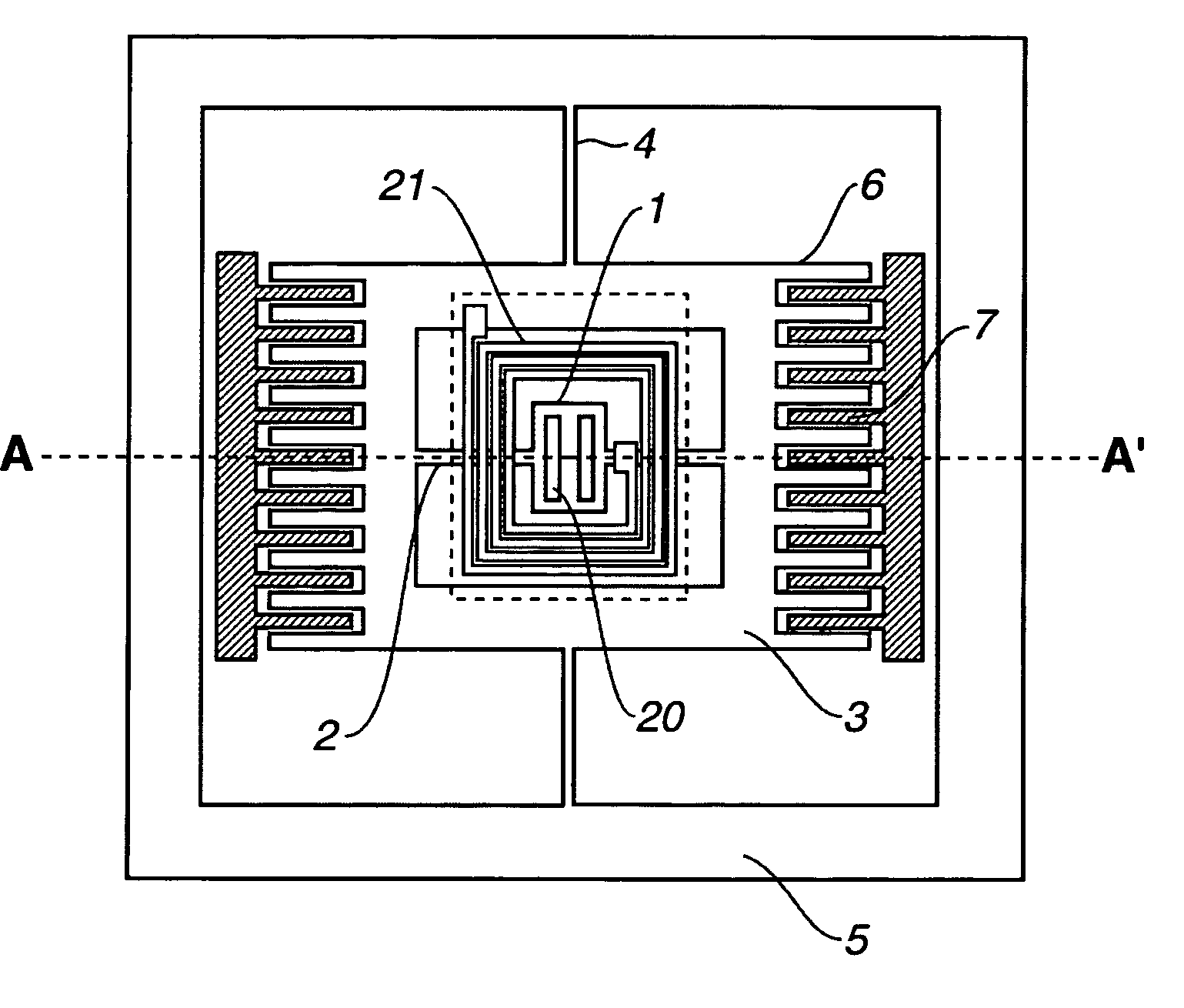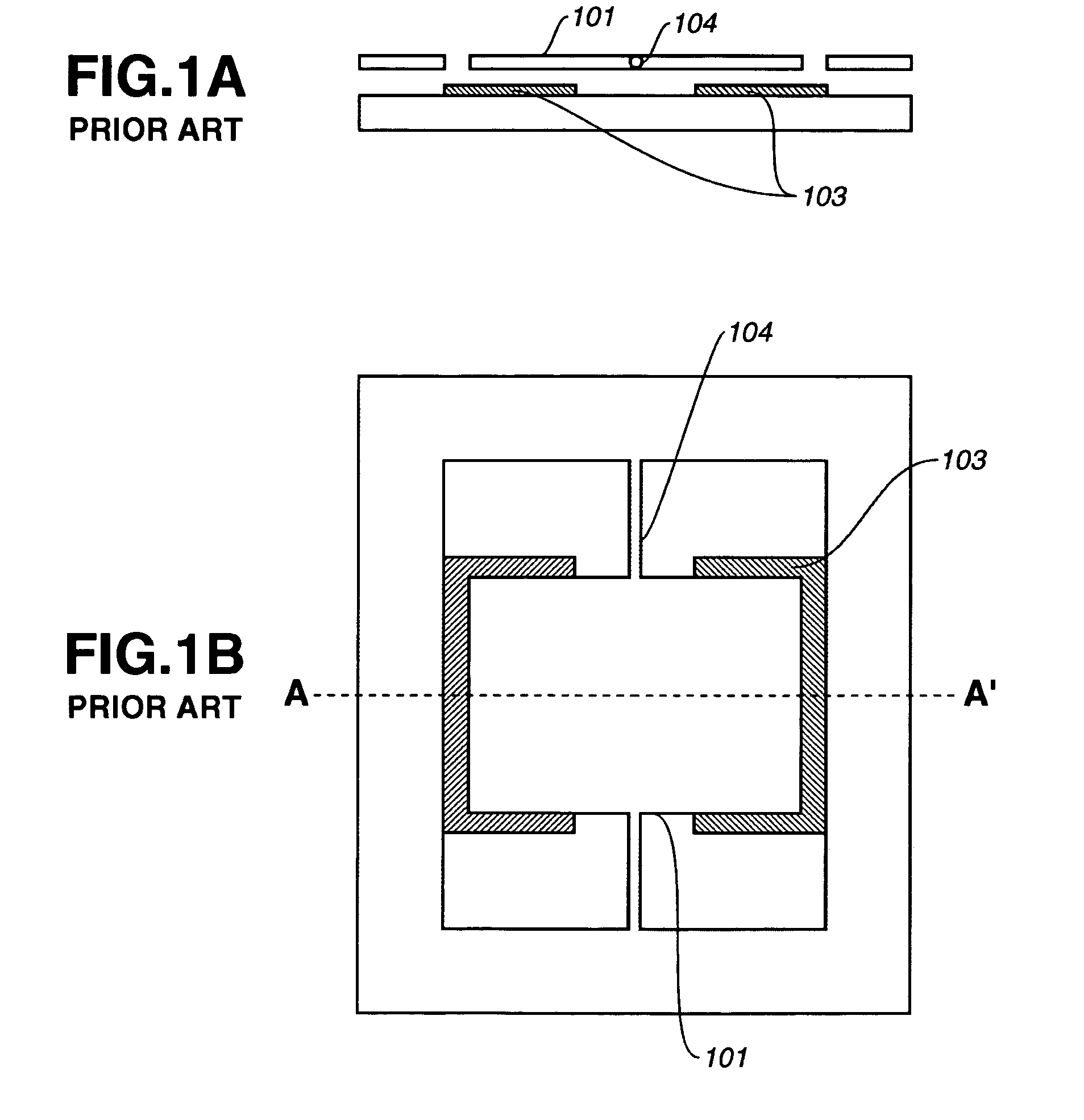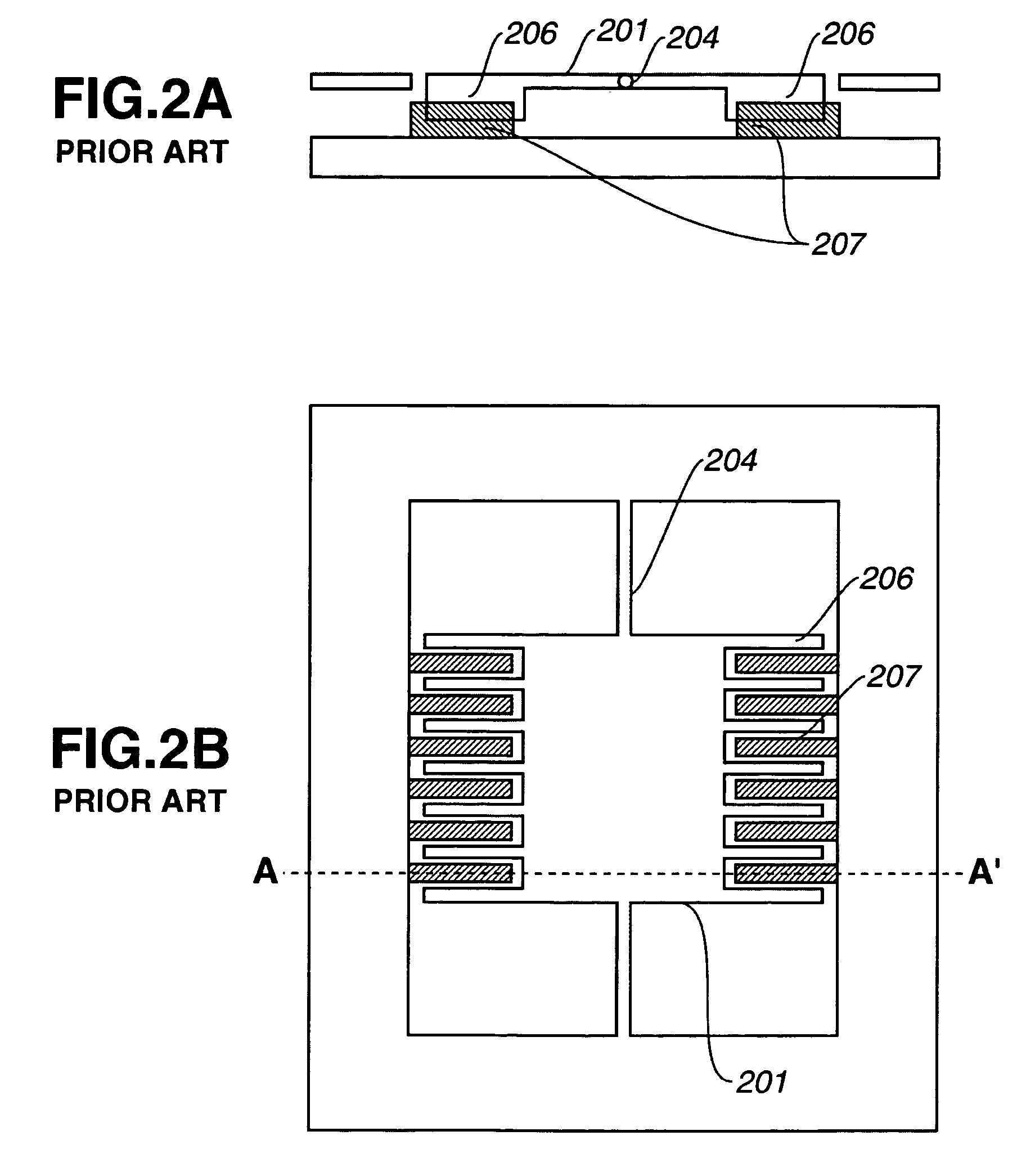Optical deflector
a technology of optical deflector and movable portion, which is applied in the direction of optical elements, mountings, instruments, etc., can solve the problems of reducing the deflection angle of a movable portion, affecting the operation of the deflector, so as to reduce the structural size, reduce the driving voltage, and reduce the deflection angl
- Summary
- Abstract
- Description
- Claims
- Application Information
AI Technical Summary
Benefits of technology
Problems solved by technology
Method used
Image
Examples
first embodiment
[0041]an optical deflector will be first described with reference to FIGS. 6A and 6B, and FIGS. 7A to 7C. In those figures, reference numeral 1 designates a movable mirror, reference numerals 2 and 4 designate torsion bars, reference numeral 3 designates a gimbal or a movable frame, reference numeral 5 designates a frame, reference numeral 6 designates a movable interdigitated comb electrode, reference numeral 7 designates a stationary interdigitated comb electrode, reference numeral 8 designates a pull-out electrode for pulling out the stationary interdigitated comb electrode 7, reference numeral 9 designates a common substrate, reference numeral 10 designates a spacer, reference numeral 11 designates a reflective film, reference numeral 20 designates a movable magnet, reference numeral 21 designates a stationary coil, reference numeral 22 designates a coil substrate, and reference numeral 23 designates a pull-out electrode for pulling out the stationary coil 21.
[0042]In the first ...
fourth embodiment
[0050]the image forming apparatus will be described with reference to FIG. 10. In FIG. 10, reference numeral 51 designates a driving portion for modulating a light source, reference numeral 52 designates a modulation signal, reference numeral 53 designates a light source to be directly modulated, reference numeral 54 designates directly-modulated output light, reference numeral 55 designates an optical deflector of the present invention, reference numeral 56 designates a correction optical system, and reference numeral 57 designates an image display member.
[0051]In this image forming apparatus, the optical deflector 55 used herein have technical advantages that the driving voltage can be made relatively low, that a high-speed scanning can be carried out, and that the deflection angle can be made relatively large. Therefore, in the image forming apparatus using the optical deflector 55, its cost and size can be reduced, the electrical power consumption can be lowered, and the resolut...
second embodiment
[0063]A second example of the optical deflector will be described with reference to FIGS. 8A and 8B. Its schematic construction is described in the second embodiment, and the structure of the second example is approximately the same as that of the first example.
[0064]The second example is different from the first example in that the stationary interdigitated comb electrodes 7 and the coil substrate 22 are placed on the recess portions 25 formed on the common substrate 9, respectively, as illustrated in FIGS. 8A and 8B. The recess portion 25 can be precisely formed on the common substrate 9 by photolithography and etching. In the second example, a single crystal silicon substrate with a (100) face is used as the common substrate 9, and the recess portion 25 having a depth of 200 microns is formed using 30%-water solution of potassium hydroxide heated to 100° C.
[0065]In the second example, the stationary interdigitated comb electrodes 7 and the coil substrate 22 are placed on the rece...
PUM
 Login to View More
Login to View More Abstract
Description
Claims
Application Information
 Login to View More
Login to View More - R&D
- Intellectual Property
- Life Sciences
- Materials
- Tech Scout
- Unparalleled Data Quality
- Higher Quality Content
- 60% Fewer Hallucinations
Browse by: Latest US Patents, China's latest patents, Technical Efficacy Thesaurus, Application Domain, Technology Topic, Popular Technical Reports.
© 2025 PatSnap. All rights reserved.Legal|Privacy policy|Modern Slavery Act Transparency Statement|Sitemap|About US| Contact US: help@patsnap.com



